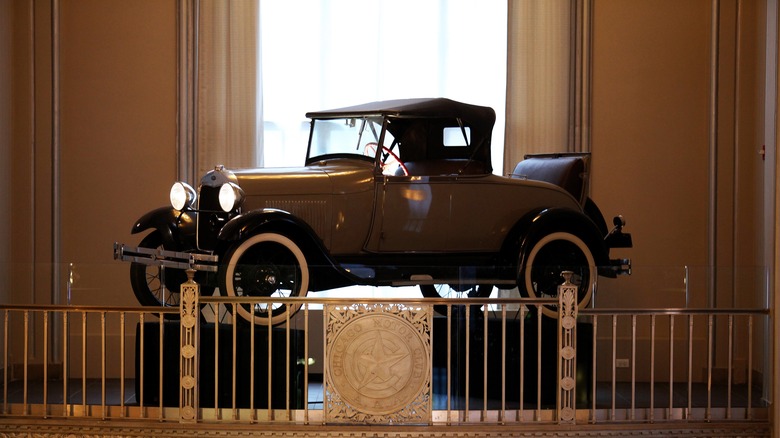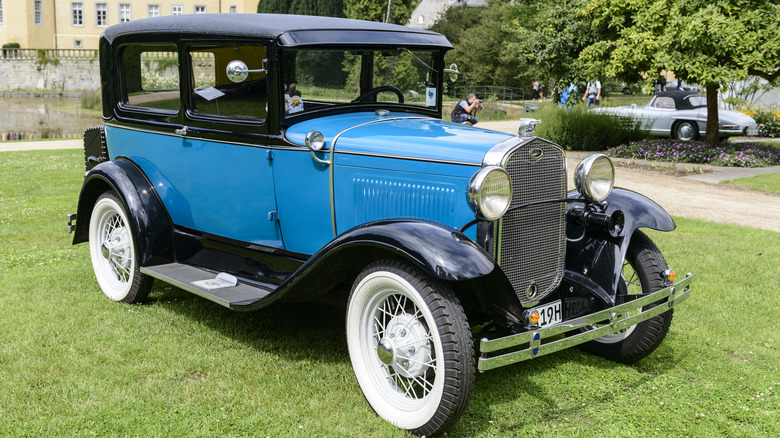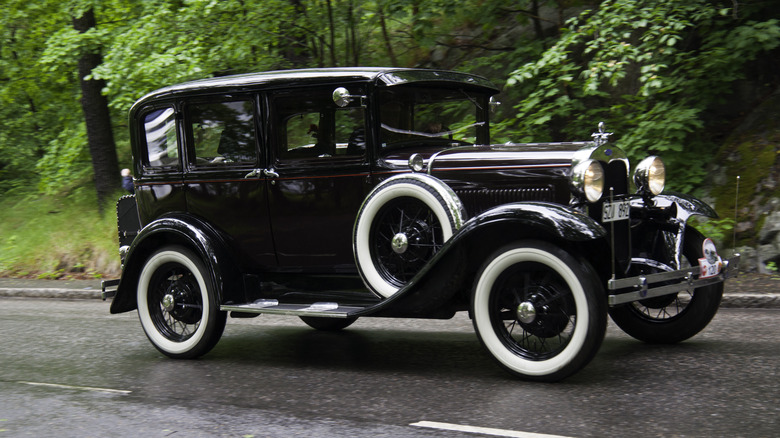Everything Ford Fans Should Know About The Second Gen Model A
After the iconic Model T, Henry Ford's next big hit with Ford fans was the Model A. It took a while for Ford to realize that his breakthrough Model T had run its course — the company built the legendary car from 1908 all the way to 1927, making the Model T the most popular car of the 1910s — and customers were clamoring for newer, faster, and shapelier machinery to rival new cars from Buick, Chevy, and Cadillac. Ford gave the go-signal in 1926, and development began on the much-awaited successor to the beloved Tin Lizzie.
The Ford Model A debuted in 1927 for the 1928 model year, and the reception was wild. More than 10 million people greeted the Model A within a week of its introduction, and the spectacle required police to calm the frenzy and direct traffic. Henry Ford had successfully "made a lady out of the Lizzie" with the Model A, and it was the first production Ford to wear the legendary Blue Oval badge.
Ford Model A: Three generations to choose from
Ford produced the Model A from 1927 to 1931, offering many body styles, including sedans, coupes, convertibles, and trucks. There were three full generations of the Model A within that short period. The first-gen Model A (popularly called the AR) came from December 1927 to June 1928, the second generation sold between 1928 and 1929, and the third was available in 1930 and 1931.
The AR and second-generation A closely resembled one another, but sharp-eyed collectors can tell a second-generation Model A from its third-gen successor. The biggest difference in actual design was the radiator construction: First- and second-generation Model As usually had nickel radiators, while third-gen models used stainless steel. Second-generation As also had a red steering wheel and put the handbrake by the driver's kick panel rather than the shifter, two touches the third-gen version would dispose of. Other small signatures of the older Model As include curvier sheet metal around the radiator and headlights shaped like acorns rather than cups.
New from radiator cap to rear axle
Vintage sales brochures for the Ford Model A describe it as "new from the radiator cap to the rear axle," and Ford wasn't kidding. The Model A had a longer body and wheelbase than the Model T, but sat lower to the ground to give it a "low-slung" vibe. More importantly, it came with an electronic starter, so buyers don't have to risk their lives and limbs to hand-crank the vehicle.
Other notable changes include a three-speed gearbox, drum brakes on all fours, a Triplex shatterproof windshield, and a 40-horsepower 200 cubic-inch L-head four-cylinder engine. The Model A was a massive hit; Ford had sold about 5 million units when production ended in 1932. Paul Newman's first car was a 1929 Ford Model A, proof that the Ford Model T's successor had put the company in good hands.
If you're considering adding a Ford Model A to your collection, prepare to fork over $20,000 to $90,000 for mint examples, and make sure to check the authenticity of the unit by verifying the numbers via the Model A Ford Club of America (MAFCA).


